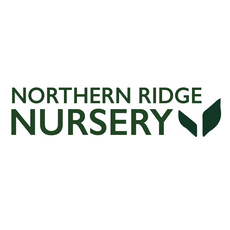Boost Your Garden: Top Tips for Pollinator-Friendly Spaces!
Welcome to our comprehensive guide on creating a pollinator-friendly garden! Whether you're a seasoned gardener or a beginner, this blog will provide valuable insights and practical tips to help you establish a vibrant haven for pollinators. By developing such spaces, not only do you contribute to local wildlife conservation, but you also enhance the beauty and productivity of your garden.
Understanding the Importance of Pollinators
Pollinators such as bees, butterflies, birds, and bats play a crucial role in the ecosystem. They are essential for the reproduction of many flowering plants and are responsible for the fruits and seeds that feed the world. Creating a garden that supports these creatures benefits both the local environment and the global ecological balance.
Choosing the Right Plants
The foundation of a pollinator-friendly garden is the selection of appropriate plants. When selecting plants, consider these factors:
- Natives: Native plants are more likely to thrive in your local climate and soil, requiring less water and maintenance. They are also more likely to attract and support your local pollinators.
- Variety: A diverse selection of plants will attract a diverse array of pollinators. Include a mix of flowers in terms of shapes, colors, and sizes to cater to different preferences.
- Blooming Period: Aim for a garden that has plants blooming in different seasons to provide a continuous food supply for pollinators throughout the year.
- Clustering: Plant flowers in clusters to make them more appealing and easier to locate by pollinators.
- Sunlight: Most flowering plants need plenty of sunlight, so place your pollinator-friendly plants in areas where they will receive maximum light throughout the day.
- Shelter: Provide shelter for pollinators by leaving some areas of your garden wild or by creating habitats such as bee hotels or butterfly shelters.
- Avoid Pesticides: Chemical pesticides can be harmful to pollinators. Opt for organic methods of pest control or use natural predators like ladybugs to control pests.
- Water Sources: Include a shallow water source, such as a birdbath or a small pond, to provide pollinators with necessary hydration.
- Composting: Composting your garden waste provides a rich, organic material that will nourish your plants without the need for chemical fertilizers.
- Weed Control: Keep the weeds at bay to prevent them from competing with your plants for nutrients and water.
- Pruning: Regular pruning helps keep the plants healthy and encourages more blooms, which in turn attract more pollinators.
- Monitoring: Regularly check your plants for signs of disease or pests. Early detection can prevent major outbreaks and reduce the need for chemical intervention.
- Educational Workshops: Host workshops in your garden or local community center to educate others about the importance of pollinators and how to create pollinator-friendly spaces.
- Community Gardens: Encourage your local community to develop a community garden dedicated to pollinators. This can become a vital sanctuary for pollinators in urban areas.
- School Projects: Collaborate with local schools to develop pollinator gardens on their grounds to educate children about the importance of Biodiversity and conservation.
Designing Your Garden for Pollinators
Once you have selected the right plants, the next step is designing your garden to maximize its attractiveness to pollinators:
Implementing Sustainable Gardening Practices
To truly benefit pollinators, your garden should not only attract them but also provide a safe environment free from harmful chemicals:
Maintaining Your Pollinator-Friendly Garden
Regular maintenance is key to the success of any garden. Here are some tips to keep your pollinator-friendly garden thriving:
Engaging the Community
Enhancing pollinator populations is a community effort. Share your knowledge and enthusiasm with neighbors, schools, and local organizations. Here are a few ideas:
Conclusion
Creating a pollinator-friendly garden is a rewarding endeavor that contributes to environmental sustainability and Biodiversity. By choosing the right plants, designing your space thoughtfully, and using sustainable practices, you can create a thriving garden that supports local wildlife and brings beauty to your surroundings.
Ready to make a difference? Start planning your pollinator-friendly garden today, and transform your green space into a vibrant eco-haven. Your local pollinators will thank you, and you'll be making a significant contribution to preserving our planet's vital Biodiversity.










